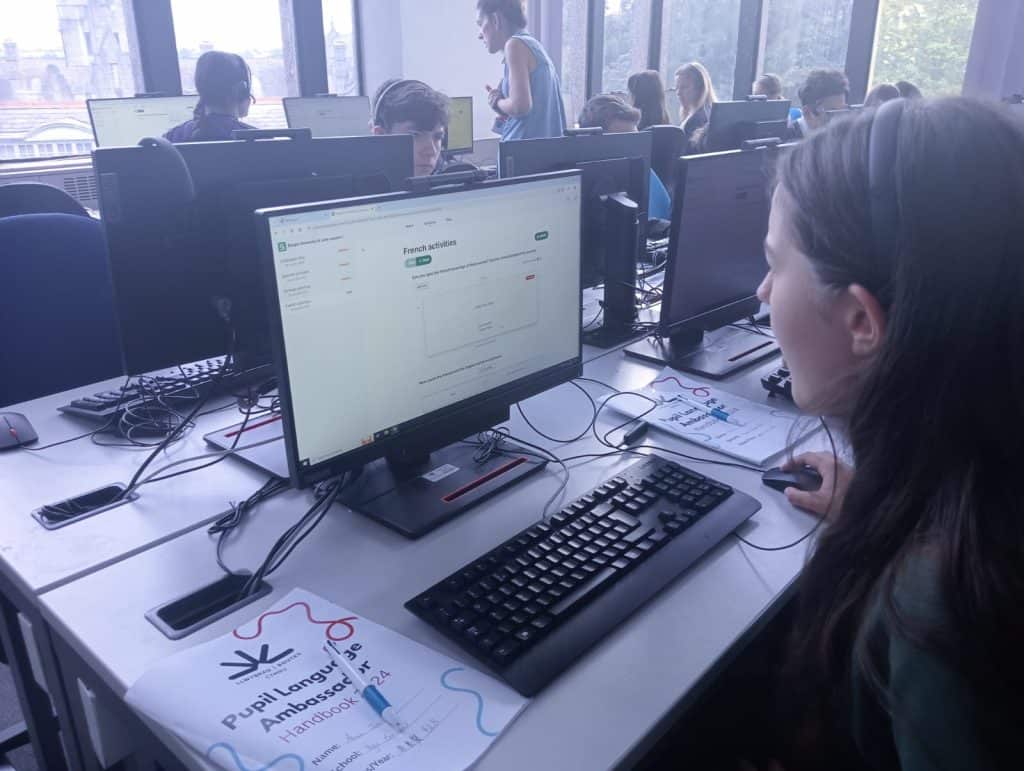Communicative Language Teaching (CLT) has changed the way languages are taught, focusing on active interaction and real communication instead of passive learning and textbook exercises. As a language teacher looking to implement CLT in your classroom, it’s essential to employ advanced techniques that go beyond traditional methods. This blog post explores some of these advanced CLT techniques, providing you with actionable strategies to enhance your language teaching pedagogy.
Incorporating Real-Life Scenarios
One of the most effective advanced techniques in communicative language teaching is the incorporation of real-life scenarios. This approach helps your students apply their language skills in practical, everyday contexts, making learning more relevant and engaging. For instance, role-playing activities such as ordering food in a restaurant, asking for directions, or simulating a job interview can significantly enhance your students’ communicative competence.
Real-life scenarios also encourage students to think on their feet and use their target language spontaneously, which is crucial for developing speaking fluency. You can create these scenarios based on the interests and needs of your students, ensuring that the activities are both meaningful and motivating. Additionally, incorporating cultural elements into these scenarios can provide your students with a deeper understanding of the language and its use in different contexts.
Moreover, real-life scenarios can be integrated into various classroom activities, such as group discussions, presentations, and debates. This not only makes the learning process more dynamic but also helps your students develop critical thinking and problem-solving skills, which are essential for effective communication.
Utilising Technology in the Classroom
In today’s digital age, utilising technology in the classroom is an indispensable part of advanced CLT methods. Tools such as language labs, interactive software, and online learning resources can greatly enhance the learning experience. For example, Sanako’s language teaching software offers a range of functionalities that support interactive and engaging language learning activities.
Technology can facilitate various communicative activities, such as virtual exchanges with native speakers, online discussion forums, and multimedia presentations. These activities provide your students with authentic opportunities to practice their language skills and receive immediate feedback. Additionally, technology can help you track students’ progress and tailor your instruction to meet individual needs.
Furthermore, incorporating technology into language teaching can make learning more accessible and flexible. Online platforms and mobile apps allow your students to practice their language skills anytime and anywhere, making it easier for them to integrate language learning into their daily lives. This flexibility can lead to increased motivation and better learning outcomes.
Collaborative Learning Strategies
Collaborative learning strategies are another key component of advanced communicative language teaching. These strategies involve students working together in pairs or groups to complete tasks, solve problems, and create projects. Collaborative learning not only promotes interaction and communication but also helps your students develop important social and teamwork skills.
One effective collaborative learning strategy is the use of group discussions and debates. These activities encourage your students to express their opinions, listen to others, and negotiate meaning, which are all essential skills for effective communication. You can facilitate these activities by providing clear guidelines and support, ensuring that all students have the opportunity to participate and contribute.
Another collaborative learning strategy is project-based learning, where students work together to create a final product, such as a presentation, video, or written report. This approach allows your students to apply their language skills in a meaningful and authentic context, while also developing their research, planning, and organisational skills. You can support project-based learning by providing resources, guidance, and feedback throughout the process.
Focus on Fluency Over Accuracy
In traditional language teaching, there is often a strong emphasis on accuracy, with students being corrected for every mistake they make. However, in communicative language teaching, the focus is on fluency over accuracy. This means encouraging your students to use the language freely and confidently, without worrying too much about making mistakes.
Focusing on fluency helps your students develop their ability to communicate effectively and spontaneously. You can support this by creating a positive and supportive classroom environment, where students feel comfortable taking risks and experimenting with the language. Activities such as free speaking exercises, storytelling, and improvisation can help your students build their fluency and confidence when using their target language.
While accuracy is still important, it should not be the primary focus in communicative activities. Instead, you can provide corrective feedback in a way that does not interrupt the flow of communication. For example, you can take note of common errors and address them in a separate feedback session, or use gentle correction techniques that do not disrupt the conversation.
In conclusion, advanced techniques in communicative language teaching, such as incorporating real-life scenarios, utilising educational technology, employing collaborative learning strategies, and focusing on fluency over accuracy, can greatly enhance the effectiveness of your language pedagogy. By adopting these techniques and leveraging tools like Sanako’s language teaching solutions, you can create a more engaging, dynamic, and effective language learning experience for your students.
